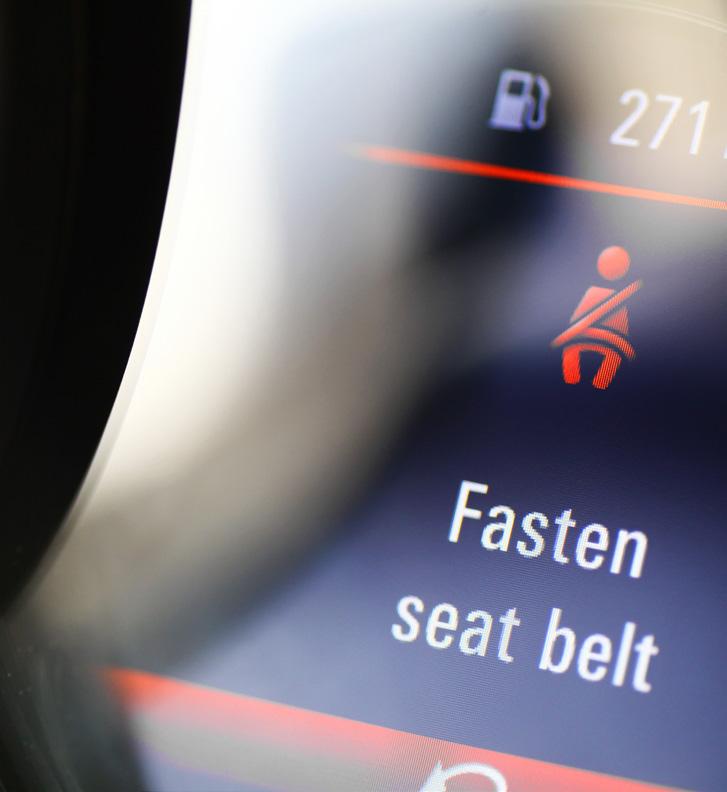
3 minute read
The evolution of vehicle safety features
THE EVOLUTION OF VEHICLE SAFETY FEATURES In this article, ACA Research takes a look at the key safety features shaping our vehicles today, others we expect to see landing in more vehicles over the next few years, and the impact these will have on the automotive aftermarket.
Consumers and businesses want cars that are fuel-efficient, comfortable and, most importantly, safe. Looking back at the evolution of road safety, a lot has changed in a relatively short period of time. From the early horse-drawn carriages to today’s cars with seatbelts, airbags, sensors, cameras, and an increasing range of autonomous features, technology in the auto industry seems to be advancing at an impressive rate. As these technologies mature, we are also seeing more and more safety features moving from the premium end of the market into our everyday vehicles. It is easy to forget that as recently as 1971, seatbelts were optional, and that cars produced in the late 1990s most likely only had a single driver airbag. Fast forward to today, and a key technology improving road safety is the suite of tools that sit under the blanket term of Advanced Driver Assistance Systems (ADAS). ADAS helps drivers achieve a safer (and better) driving experience through features such as blindspot monitoring, lane keep assist, autonomous emergency braking, traffic sign recognition and night vision (to name but a few). ADAS helps drivers avoid potential incidents by delivering alerts that ensure they take timely control of the vehicle, or even slowing or steering the vehicle on their behalf. While we will see more and more ADAS features turning up in privately-owned vehicles, they are also increasingly important to businesses, which operate 3.8 million vehicles on Australian roads. The newly published ACA Research Fleet Insights report found that almost one in three business fleets already own vehicles with ADAS features. Looking ahead, this is predicted to rise to almost 50 percent over the next 12 months, with almost eight in 10 viewing it as an important factor when selecting a new vehicle. While many of these vehicles will initially be serviced in dealerships, we know that aftermarket workshops have a significant fleet customer base (and also frequently service consumers with newer vehicles), meaning it will be increasingly important to understand how to manage the diagnostic evaluation, maintenance and calibration of the diverse ADAS systems we see coming into the car parc.
3.8 MILLION BUSINESS FLEET VEHICLES IN AUSTRALIA
1 IN 3 ALREADY OWN VEHICLES WITH ADAS FEATURE
THIS IS PREDICTED TO RISE TO ALMOST 50% OVER THE NEXT 12 MONTHS
ALMOST 8 IN 10 BUSINESS FLEETS VIEW ADAS AS AN IMPORTANT FACTOR WHEN SELECTING A NEW VEHICLE
Figure One: Key Stats from ACA Research’s Fleet Insights
Focusing more specifically on fleets, another key safety measure being implemented in today’s new vehicles (and fitted as an aftermarket addition in fleets more broadly) is dash cams. Looking again at the Fleets Insights research, one in four fleets use forward facing dash cams, and almost one in five are using internal dash cams that can monitor drivers for ‘risky’ behaviours (for example, phone usage or micro-sleeps). While fleets have been early adopters of this technology, it will become more common in consumer vehicles too. Last year, Volvo announced it will put cameras in all of its vehicles, aiming to curb distracted driving, and driving under the influence. While these safety innovations started in premium vehicles, they are increasingly shifting across to the mass-market, and will be turning up in your workshops in the near future (if they are not already there). While servicing new technologies does make life more complicated, the government announcement that they will shortly introduce legislation around the mandatory sharing of automotive data should ensure the aftermarket is able to complete this work directly, as against referring it to a dealership. Workshops with a more significant fleet customer base, or those that typically attract consumers with vehicles in warranty should be paying particularly close attention here, ensuring their teams have the equipment and training needed to service these customers. This column was prepared for AAA Magazine by ACA Research, our partners in the AAAA Aftermarket Dashboard which is delivered to AAAA members each quarter.
For more information, visit www.acaresearch.com.au or contact Ben Selwyn on bselwyn@acaresearch.com.au











